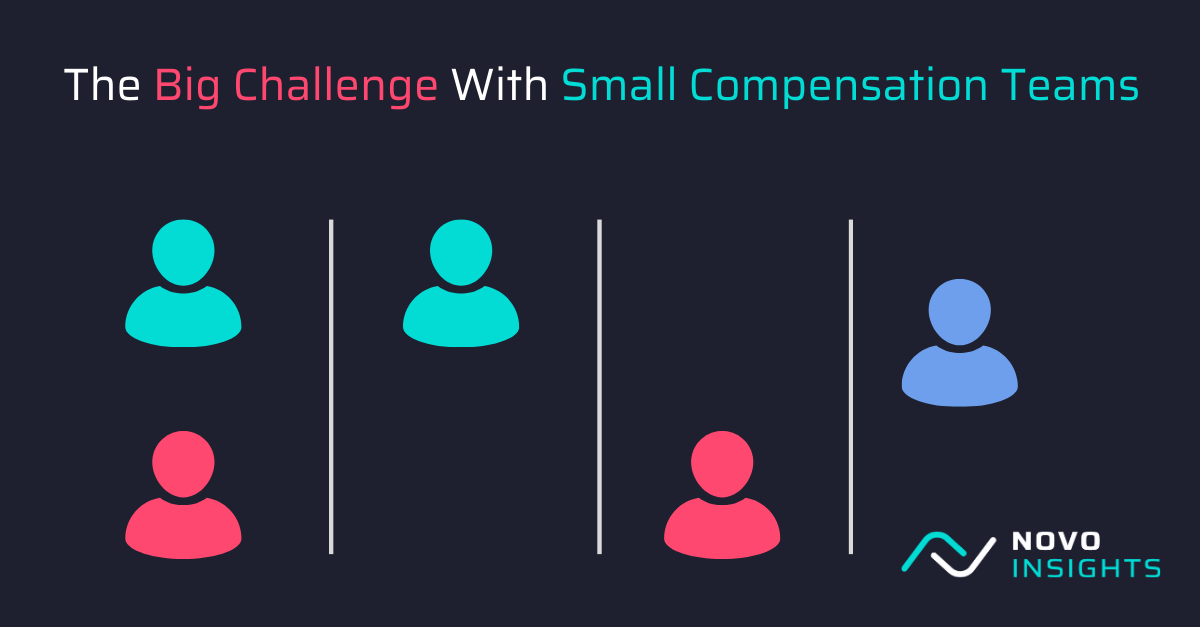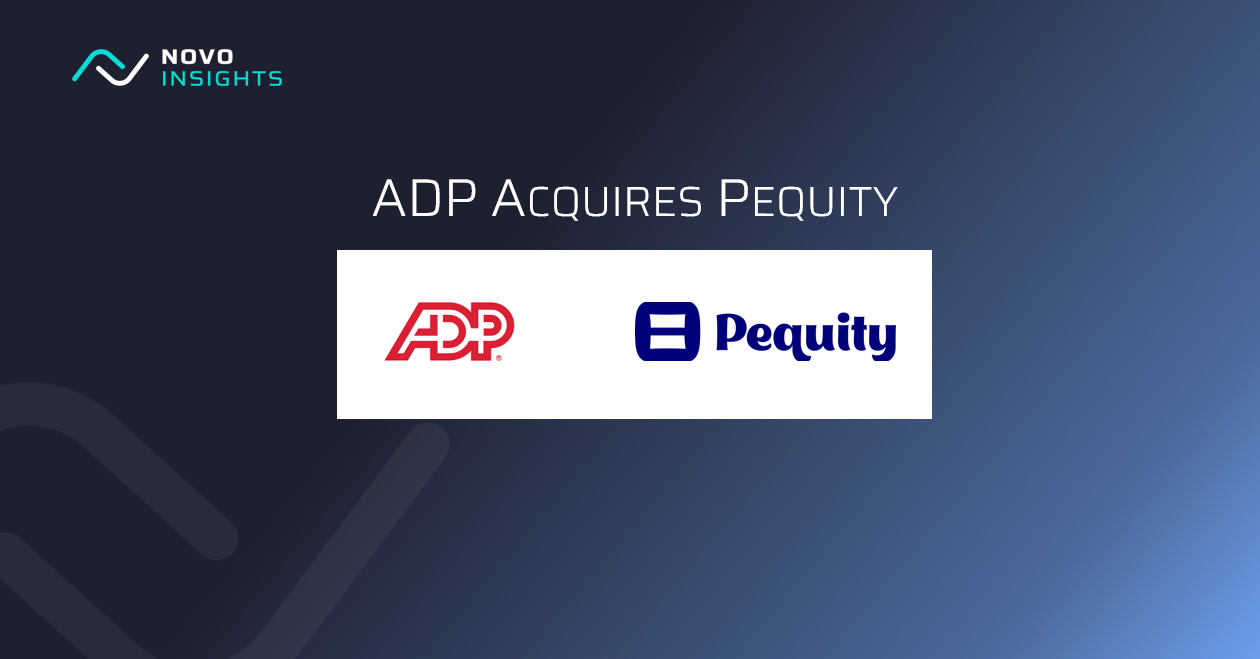Small compensation teams are hard to optimize. Here's our view on why - and how we work with clients to help.
If you are a compensation professional and reading this, chances are you are part of a small team. As part of our CompTech Market Insights Survey, we found that 62% of organizations had a compensation team of 4 or fewer people. This was consistent with benchmarks we identified in 2023, when we specifically studied the relationship between organizational size and compensation team size.
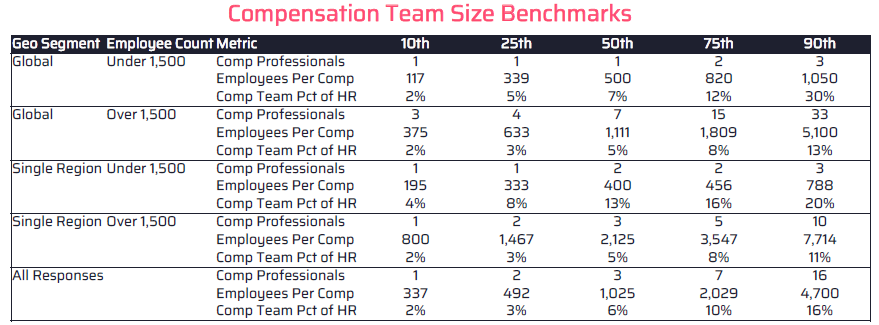
Source: 2024 CompTech Market Insight Survey
In the table above, we see that the small team challenge is particularly true for organizations under 1,500 employees, in which most organizations operate with just one or two compensation professionals.
It's no wonder why our 2023 survey found that 60% of compensation professionals believe their team is understaffed.
Understanding the Compensation Team Challenge
The work within a compensation team varies from recurring transactional and recurring program work, requiring resources to handle volume and be deep in day-to-day analysis and delivery. The team also has to be prepared for cyclical programs like annual compensation cycles. At the same time, compensation teams need to bring thought leadership and project management to handle broader changes and business transformation.
The Work of Compensation
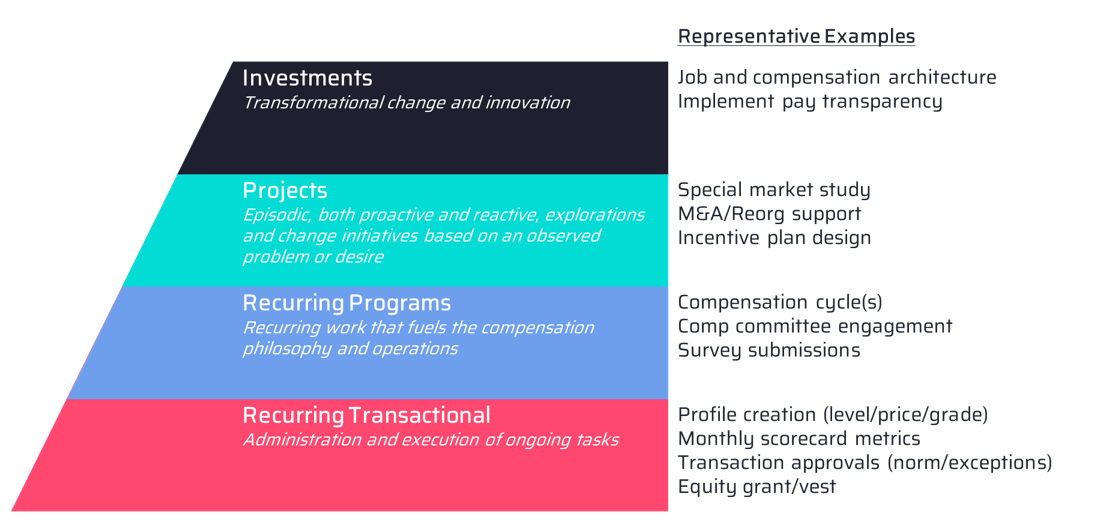
Unfortunately, this workload doesn't fit nicely into a small number of workers, particularly when you have to work with just one or two discrete headcount.
Typical Small Compensation Team Structures
Four primary compensation team structures emerge within smaller organizations, each with its unique costs, advantages, and challenges:
The Lone Leader

Recognizing the need for a strategic perspective, the Chief People Officer brings in a head of compensation to report directly to them. This gives compensation a seat at the People leadership table. Unfortunately, this approach results in a lack of base execution capacity, where the organization is overpaying for transactional work. There is notable risk during peak cycles of burning out this leader, and there is a lot of key person risk: hiring someone without the right mix of expertise still leaves a gap, and attrition from this role leaves the organization without any capacity.
Analyst on an Island
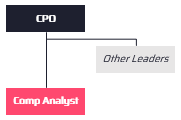
Rather than over-invest in day-to-day transaction work, this structure focuses on cost optimization and delivering the basics. At typically half the cost of a Lone Leader, the organization starts building with a skilled analyst.
This structure faces challenges when more strategic matters arise, placing a large burden on the CPO to have their compensation expertise to bear. The burnout risk and key person risk remain, as all work and process knowledge are centered on a (relatively mobile) analyst.
The Tweener
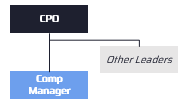
Attempting to play Goldilocks between the two models above, some organizations focus their team-of-one resources on a headcount that sits between an analyst and a leader. They hope they can flex up when thinking and experience are needed and will still be efficient and engaged in day-to-day delivery matters. This strategy also costs less than a leader without being too much more expensive than an analyst.
With the right person - this strategy can work. But in more cases than not, it's difficult to find a single person who can be an analyst and a leader at the same time. Key person risk remains.
The Dynamic Duo
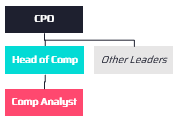
Eventually, the business case is accepted for a team of two, which can relieve many (but not all) of the challenges of the above strategies. This approach and resource level enhance delivery ability and provide thought leadership when needed.
Two key drawbacks still remain. First, the organization has to be ready to invest in two heads. Second, while having a team of two decreases the key person risk a bit, we find that when attrition happens with one member of the duo, the second is often not far behind.
A Better Way
Having limited headcount isn't the problem. The true challenge is trying to work in full-head increments, which requires a specific choice of skills and experiences.
Utilizing fractional resources can mitigate risk, provide access to expertise, and supplement delivery capacity when needed.
The Novo Insights Compensation-as-a-Service solution provides growing organizations with the right mix of resources and expertise, typically at a lower cost than a full-time headcount. We have successful relationships with clients of a variety of sizes and team structures, as we can surround and supplement existing resources in a flexible and thoughtful way.
Does fractional resourcing sound right for you?

